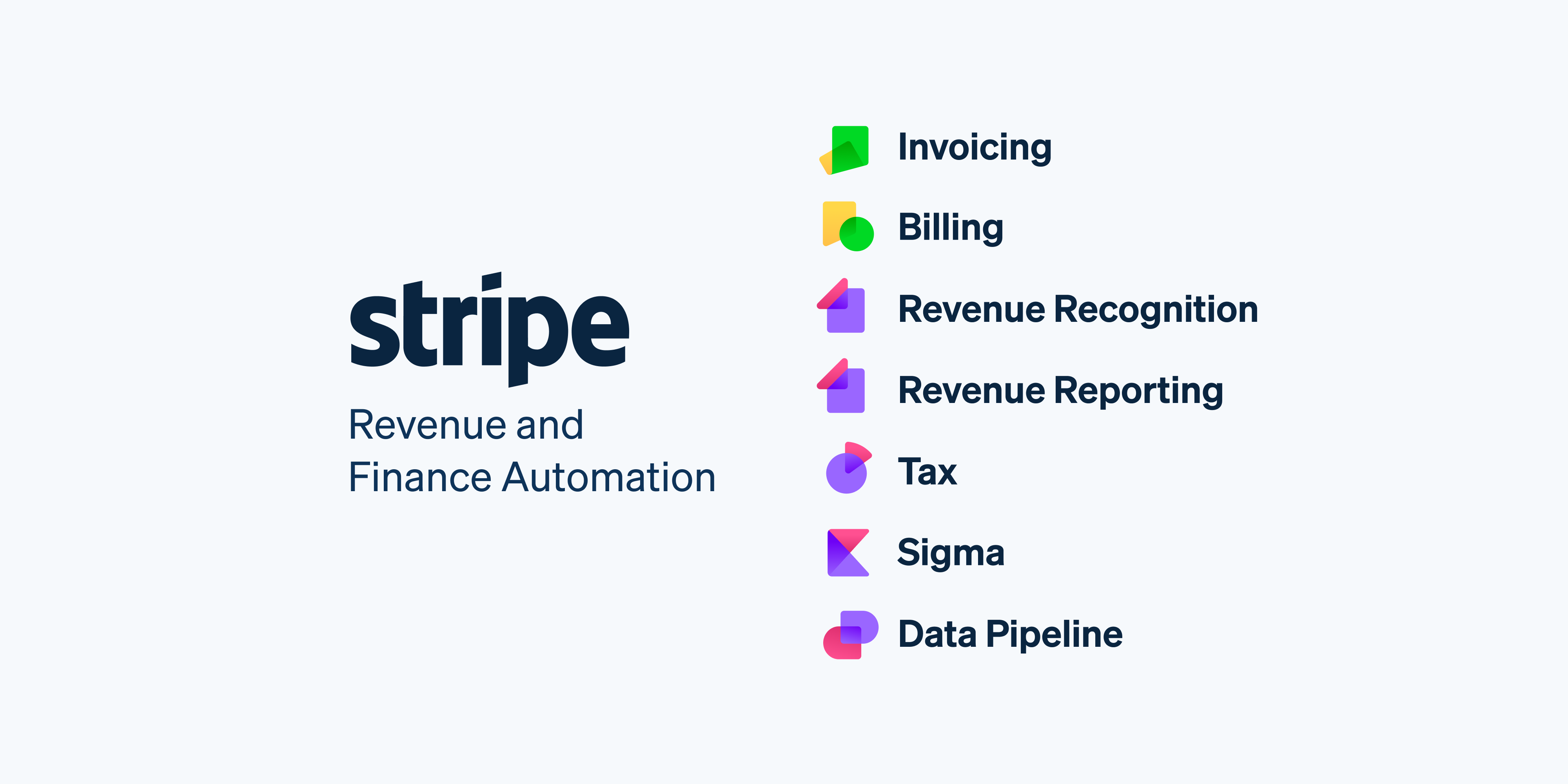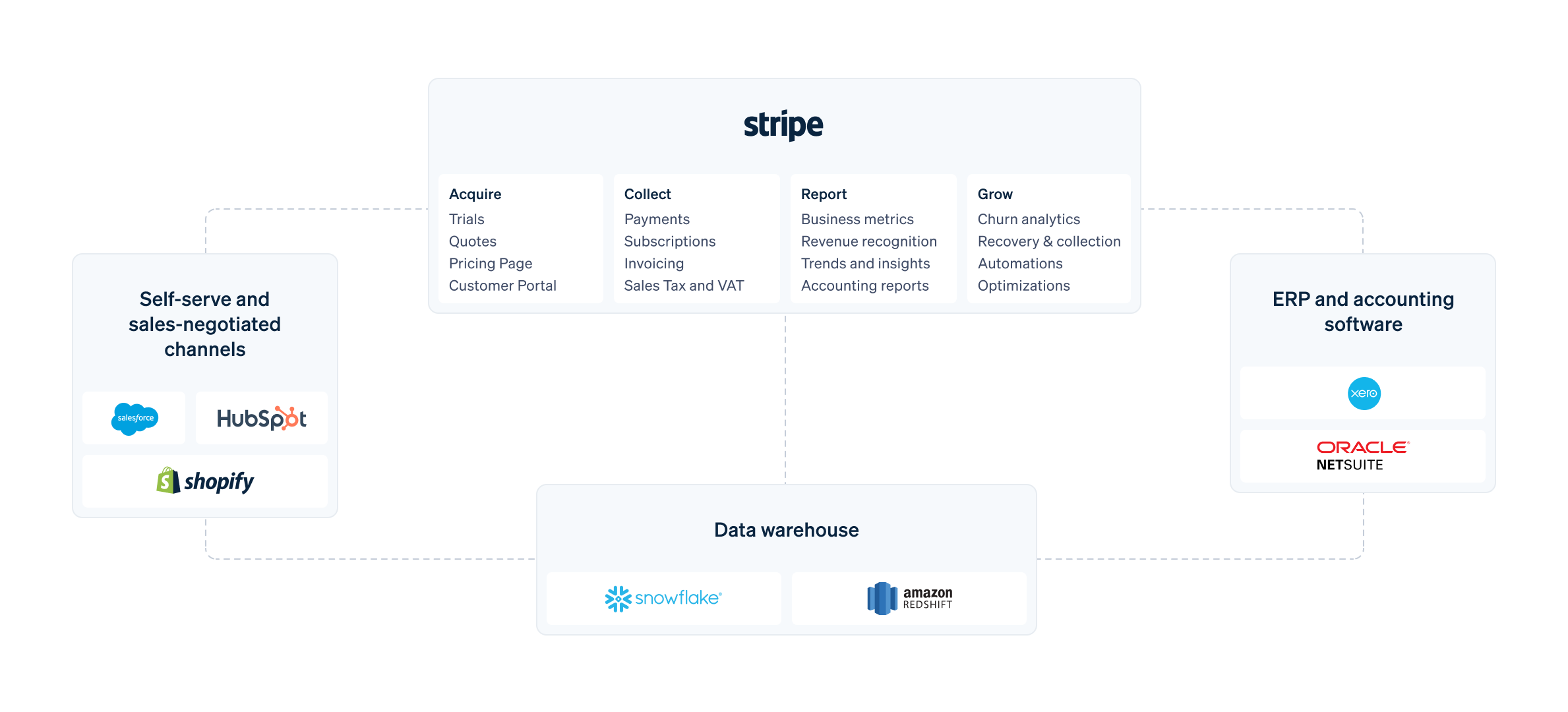Stripe expands its revenue and finance automation suite to help ambitious companies modernize their finance stacks

- Stripe makes major upgrades to Stripe Billing and Stripe Tax, and launches Stripe Revenue Reporting in beta, to help companies eliminate back-office inefficiencies and support revenue growth.
- New Billing features reduce failed payments and customer churn, and the new Tax API automates sales tax calculation for transactions on and off Stripe.
- Over 250,000 companies, including Atlassian, OpenAI, and Ritchie Bros., now use Stripe’s revenue and finance tools to acquire, collect, report, and grow revenue. Stripe’s automated revenue recovery features earned businesses an extra $3.8 billion in 2022.
SAN FRANCISCO AND DUBLIN—Stripe, a financial infrastructure platform for businesses, today announced the expansion of its revenue and finance automation suite to give businesses power over the entire life cycle of their cash flow. By coordinating billing, tax, reporting, and data services in one modern stack, Stripe’s revenue and finance automation suite eliminates the inefficiencies of legacy finance tools and supports revenue growth.
With the launch of Revenue Reporting, and major upgrades to Stripe Billing and Stripe Tax, Stripe aims to bring the same users-first approach to back-office operations that it brought to payments. The revenue and finance automation suite allows finance teams to get more done in less time, while freeing them to focus on the areas that matter most to their business.
The challenges facing finance leaders
While the internet has been a boon to productivity, the gains have been uneven. Common financial processes like billing, tax, and quarterly reporting are still painfully inefficient and manual. They’re also typically spread across a dozen or more software tools. The result: one-third of finance leaders reopen their books at least once a quarter because of accounting errors, and half spend 10 hours a month manually correcting discrepancies.
Stripe’s suite relieves those burdens by equipping finance leaders with revenue management tools that are as sophisticated as the businesses they run. The suite automates manual work and improves accuracy across the cash flow life cycle, from payments and billing to tax, reporting, and reconciliation.
Fast-growing businesses like OpenAI no longer need to cobble together as many integrations from multiple software providers—a single integration with Stripe works instead. They can start with Stripe for payments or subscriptions; then, as they grow, they can easily switch on other revenue and finance automation products to support work like billing quotes and VAT. Established enterprises like FOX Sports used Stripe Billing to manage its monthly subscription model and add different pricing models, premium experiences, and new payment options for subscribers.
It’s how finance should work for any modern business.
“For years, our users have been asking Stripe to help them run a more efficient finance operation, one plagued by fewer daily frustrations,” said Vivek Sharma, head of revenue and finance automation at Stripe. “We can’t ship them Advil every month, but we can take care of their headaches. Stripe’s revenue and finance automation suite is designed to be a smooth, one-stop shop for forward-thinking finance teams.”
A unified approach to revenue and financial management
The revenue and finance automation suite includes Billing and Stripe Invoicing for acquiring customers and earning revenue; Stripe Tax, Revenue Recognition, and (as of today) Revenue Reporting for collecting sales tax, reporting revenue, and closing the books; and Stripe Data Pipeline and Stripe Sigma for data analysis.

These products use Stripe’s industry-leading payments architecture to grow revenue on its users’ behalf. Stripe’s automated revenue recovery features earned Stripe businesses an additional $3.8 billion in revenue in 2022 by reducing customer churn and payment failures. Billing has been adopted by hundreds of thousands of businesses, including Slack, Atlassian, Deliveroo, and Figma.
“We're excited to work with Stripe to monetize our flagship products,” said Peter Welinder, vice president of product and partnerships at OpenAI. “Beyond payments, Stripe is helping us with everything from recurring billing and tax compliance to automating our financial operations.”
Today’s expansion includes:
- A new Revenue Reporting tool (beta), which gives finance leaders a better snapshot of key financial metrics, including monthly recurring revenue, customer growth by activity, and revenue by product, and provides automated accounting statements for cash-accounting businesses;
- Stripe Tax API with multiprocessor support, which lets businesses manage tax on any transaction, including those not processed by Stripe (available in 40+ countries);
- Stripe Tax support for additional location-specific tax requirements such as the Chicago Lease Tax, which is required for certain businesses selling SaaS into the city of Chicago; the EU Import One Stop Shop (IOSS), which is required for businesses selling physical goods into the EU; and US location reports to make filing easy even with vastly different state filing requirements;
- No-code revenue recovery and retention automations, which allow finance teams to create customized triggers and actions such as receiving notifications that an invoice is overdue, or automatically sending an email to confirm a subscription has been canceled, to improve cash flow and grow revenue;
- The ability to set subscription schedules in the Stripe Dashboard, letting users model complex subscriptions with various trial and pricing periods and automate those changes over time. Stripe developed this functionality as part of a multiyear effort to support Atlassian’s enterprise needs and is now making it generally available;
- A new Salesforce CPQ connector, allowing sales teams to create a new Stripe-powered subscription for a customer directly within Salesforce;
- Automatic reconciliation capabilities to help businesses compare order-level data from their systems of record with Stripe transactions and bank deposits, providing clear visibility into cash collection and ensuring that accounts balance.
Tango is a SaaS platform that makes it easy for anyone to create a how-to guide. It uses Stripe’s revenue and finance automation suite to create a billing system that integrates closely with all of its essential finance data and scales naturally as the company grows.
“Building flexible billing methods on our own would have been super costly, and engineering hours are really precious. Stripe allowed us to quickly expand our business upmarket and meet the needs of enterprise customers who have complex sales processes,” said Dan Giovacchini, cofounder of Tango.